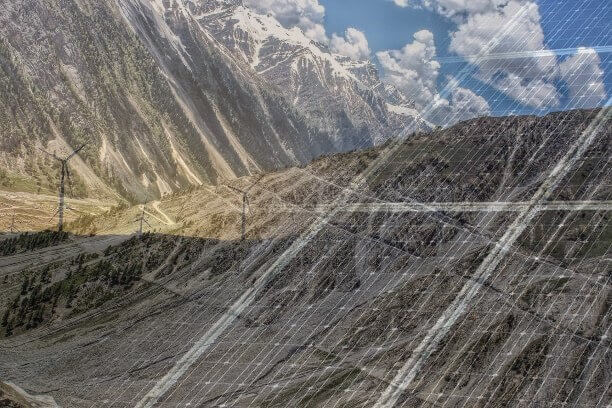

As the year draws to a close with a whimper for solar , the Solar Corporation of India (SECI) has tried to tried to add a real bang to the end. It has issued a notification stating that the request for selection or RfS for Kargil area will be issued by 31st December. The RfS will be for setting up of 2.5 GW grid-connected solar PV projects in Kargil region.
The capacity is under the Phase-1 of the government’s plan to set up 23 GW in Leh and Kargil regions of Jammu and Kashmir. The statement, however, still follows a delay on the previous announcement to release the RfS document by Mid December or 15th December 2018. The massive scale of the potential solar installation is just the sort of move that could help the government fill the ever widening gap between its targeted solar capacity and actual pace on the ground, which has slowed down considerably in the past few months, leading to many experts predicting a shortfall.
The road less traveled
Electricity is a crucial need for Jammu and Kashmir residents despite having 2,439 megawatts of Hydel power. The state of matter worsens in Winters when power cuts and heavy snowfall cuts communication lines from the mainland.
Earlier in July the government had announced that SECI issued a tender for two 1.5MW(AC) solar power projects at two locations in Ladakh, Jammu and Kashmir almost 6 months after the news broke that the state government had signed a MoU to develop two mega solar parks in the region worth a total capacity of 7500 MW. But the tender is still open and results have not yet been announced.
The far north Mountainous desert, heavy military presence and remoteness has obviously played a role in keeping these places off the grid. And combine the recent slump the solar market has; faced, developers have not shown any keenness to work in the -30 degrees sites.
[related_post]
If the government wants some action for these tenders in troubled paradise, it has to incentivize and incentivize heavily to make this a lucrative auction(s).
We at Iamrenew suggest that keeping the tariff cap flexible or better still avoiding the clause altogether (like UPNEDA auction) for the auction may attract the spooked solar businesses to the state.
The land is another issue that has made headlines in the state for all the wrong reasons. In March, Jammu and Kashmir Energy Development Agency (JKEDA) reportedly found the task to identify swathes of land for development of mega solar energy, very difficult. Unavailability of transmission line and power evacuation system in Kargil and Leh are the stumbling blocks for the installation of mega-solar projects. Mini-grids of small size can work wonders for high altitude villages.
According to the study of the National Institute of Solar Energy (NISE), Jammu and Kashmir has solar power potential of 111.05 GWp, which is the second highest in India after Rajasthan, where the potential is 142.32 GWp.
The Power Development Department Kashmir has availability of 1200 MWs of power, while the demand is expected to reach 1900 MWs in the coming weeks of winters. If Government can work a way to provide 700MW through a mix of Renewable energy sources, Kashmir will have uninterrupted green energy and easier winters.
In a significant move toward advancing green energy and industrial growth in the state, Himachal…
Golabl chemical conglomerate BASF has announced that its now offering the world’s first biomass-balanced polyethersulfone…
In a crucial stint to bolster the biogas sector and sustainable dairying in the country,…
TotalEnergies SE has received approval to proceed with its Middlebrook solar and battery project in…
Andhra Pradesh Chief Minister Chandrababu Naidu has inaugurated the Rs 1,000-crore green hydrogen plant of…
The BITS Pilani has developed an innovative solution for managing landfill leachate, domestic septage, and…